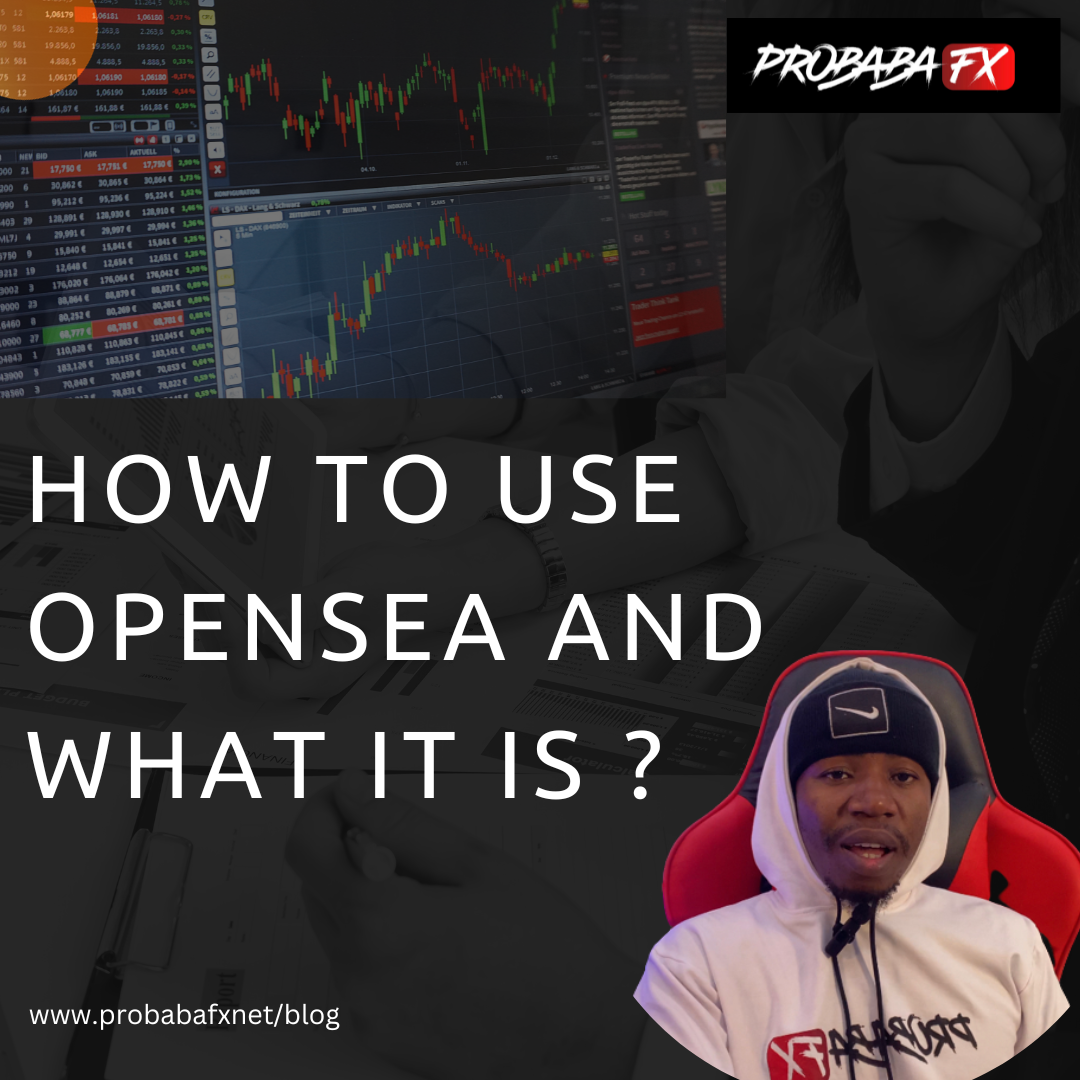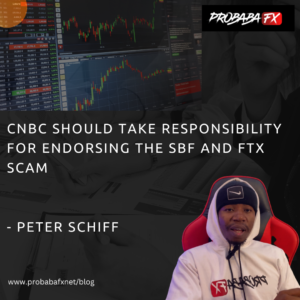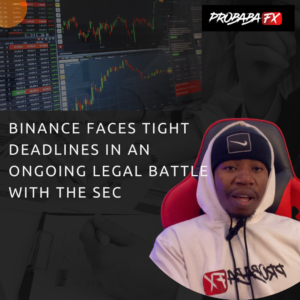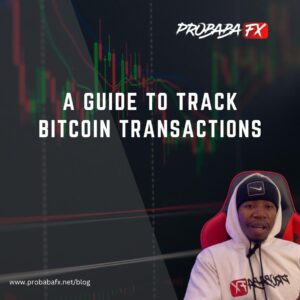The importance of the OpenSea decentralized marketplace, its advantages and disadvantages, and its contribution to the NFT revolution are all covered in this tutorial.
A new age has begun with the emergence of nonfungible token (NFT) marketplaces, radically altering how we view and use digital assets. They give artists a fresh platform to display their works and communicate with their audience in a genuine and relevant way. In this transformation, OpenSea is in the spotlight.
What Exactly is OpenSea?
Devin Finzer and Alex Atallah created OpenSea, which was founded in 2017. Their stated goal was to create an accessible and open market for NFTs. The founders wanted to create an NFT platform that would allow producers and collectors to actively participate in the developing digital ownership economy since they saw the revolutionary potential of these assets.
As nonfungible tokens (NFTs) became increasingly popular, OpenSea skillfully broadened its scope to include a larger range of blockchain networks and protocols. This tactical choice ensured that the platform could serve a constantly expanding audience by allowing it to accept the wide range of NFT projects that were developing. OpenSea’s dedication to embracing diversity and interoperability strengthened its standing as a leading NFT marketplace.
How is OpenSea put to use?
For purchasing, selling, and trading NFTs, OpenSea functions as an aggregate marketplace based on blockchain technology. It works very similarly to well-known e-commerce sites like eBay or Etsy but is decentralized.
Parallel to these platforms, OpenSea supports transactions between people, but with a special twist: it only deals with NFTs of various types, from utility NFTs like membership tickets to art, music, collectibles, virtual lands, sports assets, and domain names.
The platform’s non-custodial approach is its defining characteristic. Smart contracts that self-execute make transactions possible, guaranteeing a trustworthy and secure trade. Despite the lack of middlemen, OpenSea nonetheless takes a 2.5% commission from all secondary sales to help defray platform operating expenses.
In addition to supporting the ERC-721 and ERC-1155 Ethereum standards, OpenSea has also smoothly integrated the protocols for several additional blockchains, such as Solana and Polygon.
To enable quicker and more affordable transactions, OpenSea integrates the Polygon blockchain, a layer-2 scaling solution, in order to address the sometimes prohibitive transaction costs on the Ethereum network. On OpenSea, switching between the Polygon and Ethereum networks is a simple operation that can be completed with a single click. For newbies in particular, this user-friendly feature ensures a seamless experience.
The platform OpenSea announced a massive redesign of its infrastructure in 2022, switching from the Wyvern protocol to its recently created Seaport protocol. The goal of this transformation was to improve the marketplace’s efficiency and streamline operations, with the potential to significantly lower platform transaction costs. The protocol also makes wallet signatures easier to read and understand, thus enhancing the user experience.
The Main Aspects Of OpenSea
The OpenSea NFT marketplace is known for several unique characteristics that contribute to its success and usefulness. These features include minting capabilities, transparent transactions, lower petrol costs personalized by Layer-2 solutions, customized storefronts, instructional materials, and more.
OpenSea’s salient attributes include:
- Creators may establish ownership rights and authenticity for their digital works using the minting capability.
- Transparency: Without the use of middlemen, self-executing smart contracts from OpenSea provide safe, transparent transactions.
- Support for several blockchains: OpenSea’s connectivity with different blockchains enhances accessibility beyond Ethereum.
- Support for several blockchains: OpenSea
- OpenSea appeals to a wide audience because it covers a variety of NFT genres. These categories include art, music, collectibles, virtual lands, domains, and utility NFTs.
- Interface that is easy to use: OpenSea has a user-friendly interface that makes navigation simple, accommodates users of all skill levels, and makes NFT maintenance easier.
- Storefronts that may be customized allow creators to highlight their NFT offerings and strengthen their identity.
- Engagement with the community: OpenSea promotes dialogue through comments, followings, and exploration of popular collections.
- OpenSea offers instructional tools to assist users in understanding petrol prices, navigating NFTs, and making educated decisions.
- Continuous innovation: OpenSea adapts to the changing NFT market by adding new features, improving existing ones, and integrating new ones.
- OpenSea encourages diversity by supporting various languages and providing a variety of material to a worldwide audience.
OpenSea’s benefits and drawbacks
- Some features stand out when weighing the advantages and disadvantages of OpenSea. Positively, OpenSea provides a simple and user-friendly experience. It is accessible to everyone without any connected fees.
- The site charges negligible costs for NFT sales, which increases its allure. Additionally, the existence of several blockchains offers workarounds for Ethereum’s high transaction fees.
- On the other hand, OpenSea’s sole dependence on Bitcoin as a means of payment may restrict accessibility for people used to conventional payment methods. Due to the platform’s open design, there is a chance of running into subpar or fake NFT postings.
- The absence of comprehensive legislation and a fully decentralized governance structure may further hinder OpenSea’s decision-making processes and adherence to decentralized goals.
Use of OpenSea
There are a few crucial procedures to follow before utilizing OpenSea to make sure one can use the platform. New users should register on the OpenSea website. Users should make sure they are prepared for seamless interaction by having an Ethereum wallet, such as MetaMask, available. The following task is to select and install a suitable wallet to serve as a currency repository for transactions.
By logging in using the “Connect Wallet” option in the “Menu” section, users must then fund their wallets and establish an OpenSea account. Although wrapped ETH (wETH) is utilized within smart contracts for easier integration, ETH (1,624 $1,623) is the main currency for NFT trading on OpenSea. Over 150 different coins are accepted in addition to the recommended ETH and wETH.
Utilize filters and options to browse various NFT categories. For comprehensive information on an NFT’s item, creator, and price, click on the NFT’s name or image.
Depending on the kind of ad, select “Buy Now” or “Place Bid”. To complete the ownership transfer, users must use their wallets to confirm the transaction.
Create a listing in the “Create” section of your profile to get started minting NFTs. Upload images and information, alter the OpenSea URL, and specify the terms of an auction. Verifying the transaction and minting the NFT come next.
Click “Cancel Listing” in the top right corner of the item’s page to remove a listing. Keep in mind that linked petrol costs might change depending on network activity.
The outlook for the NFT markets
OpenSea continues to evolve and innovate in the face of a constantly changing NFT ecosystem. The platform’s capacity to adjust to new asset categories and trends, as well as its dedication to effectiveness and community involvement, augurs well for its continued dominance.
OpenSea is facing tougher competition as its rivals get more sophisticated, especially in terms of activity volume, which has been crucial to its success. Despite obstacles, OpenSea is well-positioned to influence the field of digital ownership, setting the bar for new ways to engage with art, commerce, and ownership in the age of developing technology and digital assets.
#Probabafx #Marketplace #Decentralization #NFT #OpenSea #How to




